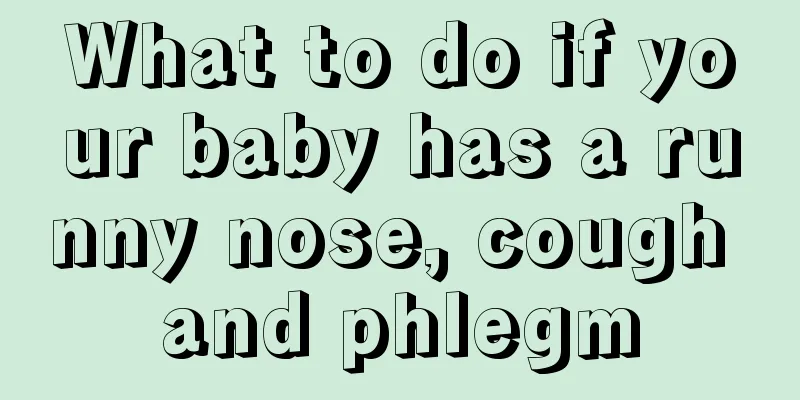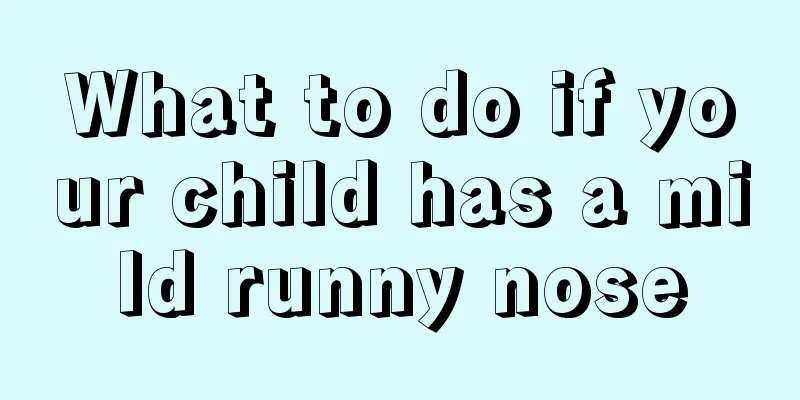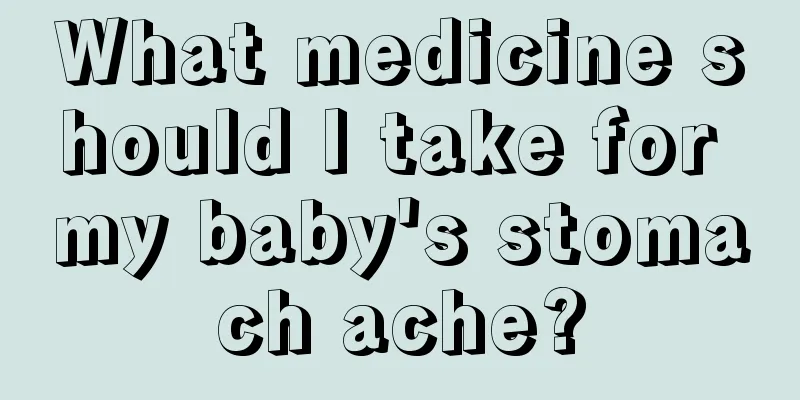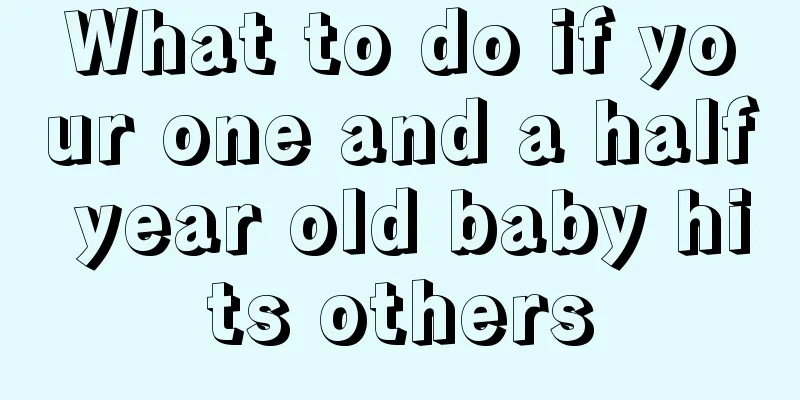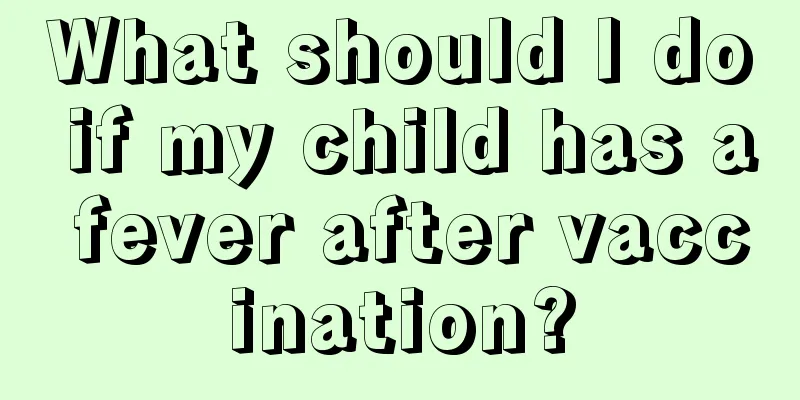What should I do if my child has a cold and fever? Scientific treatments have these!
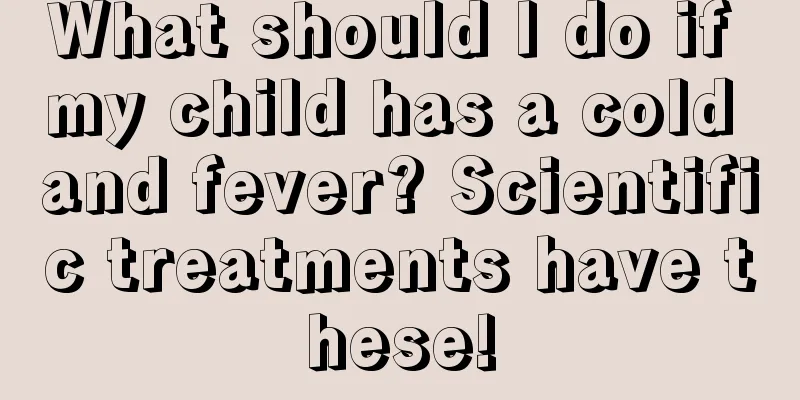
|
It is very common for children to catch a cold and have a fever, so families with young children must master the knowledge to deal with this situation. First of all, they need to provide correct care, such as allowing children to get enough sleep, closely observing their body temperature, encouraging them to drink more water, eat more nutritious and easily digestible foods, etc. The following introduces relevant treatment methods. First, treatment Theoretically, the cold is a self-limiting disease. Even without taking medicine, most children can recover on their own in about a week as long as they drink plenty of water and receive good care. However, babies have a weaker tolerance to illness and their condition changes rapidly, so even a mild cold should not be taken lightly. The treatment for colds and fevers is mainly symptomatic, and drugs containing ingredients such as acetaminophen are commonly used. Acetaminophen has antipyretic and analgesic effects; amantadine can resist the "subtype A" influenza virus and inhibit viral reproduction; caffeine is a central nervous system stimulant that can enhance the antipyretic and analgesic effects of acetaminophen. It is suitable for relieving symptoms such as fever, headache, sore limbs, sneezing, runny nose, nasal congestion, and sore throat caused by the common cold and influenza in children. Second, there are principles for taking medicine for children with colds and fevers. 1. The dosage should not be too large and the duration of use should not be too long; 2. Drink plenty of water during medication to facilitate drug absorption and excretion and reduce the toxicity of drugs to children's bodies; 3. Children under 3 years old, whose liver and kidney are not yet fully developed, should take the medicine in small doses; 4. Children or their family members who have a history of allergy to antipyretics should not use antipyretics; 5. Do not take antipyretics at the same time as alkaline drugs, such as baking soda, aminophylline, etc., otherwise the antipyretic effect will be reduced. Purulent tonsillitis, lymphadenitis, pneumonia, bacterial dysentery, typhoid fever, Japanese encephalitis, etc. may all be causes of colds and fevers in children. It can be treated with Beijing Tongrentang Angong Niuhuang Pills. Children can take this medicine when conventional antipyretics are ineffective for fever, so as to avoid serious consequences such as convulsions due to untimely treatment. Do not give any cold or cough medicine to children under 4 years old. Some over-the-counter medicines may not help relieve cold symptoms in young children, but may cause other potentially dangerous symptoms, some studies suggest. Third, disease prevention Preventive measures for colds and fevers in children Ensure nutrition Children are in the stage of growth and development, their metabolism is active, and their requirements for energy and nutrients are relatively higher than adults. Only by meeting the nutritional needs of children can we ensure their normal physical and intellectual development and form good physical fitness. A reasonable diet should not only pay attention to the dietary structure, and achieve a combination of staple and non-staple foods, coarse and fine grains, and meat and vegetables, but also cultivate children's good eating habits, eat at regular times and in fixed quantities, not be picky eaters, and try to eat less snacks, especially sugary snacks and cold drinks. Although candy can increase children's fun and provide some calories, eating too much can suppress appetite and is not good for children's health. Emphasis on exercise Physical exercise can promote children's growth and development, improve their ability to adapt to the natural environment and enhance their resistance, reduce diseases and maintain health. The methods of physical exercise vary according to the age of the child. It can be carried out in combination with daily life using air, sunlight and water, or through games and sports. Children should be dressed appropriately from birth and not too warmly. The room temperature should be appropriate, and the room temperature does not need to be too high in winter. Frequent ventilation should be carried out to keep the air fresh. Children should be trained to gradually live in a colder environment. Outdoor activities can allow them to breathe fresh air, so that the skin can be exposed to ultraviolet rays in the sun, increase the synthesis of vitamin D in the body, which is beneficial to bone growth and prevent the occurrence of rickets. Children's outdoor activities time in summer should be maintained at more than 2 hours a day. Some time should also be arranged for outdoor activities in winter. |
>>: What causes pimples on children’s gums?
Recommend
What toothpaste is good for a 10-year-old?
Many factors in people's lives can cause the ...
Is calcium lactate good for babies?
Calcium lactate is a food that can supplement cal...
What supplements are suitable for children?
Generally speaking, when you take supplements, yo...
Is it normal for a newborn baby to have a temperature of 37 degrees?
Newborns need more care when they are just born. ...
What should I do if my child has phlegm in his mouth?
Having phlegm in the mouth is a very common pheno...
Why does my child keep sneezing?
There are many reasons why children always sneeze...
What should children pay attention to when they have measles
Children are at high risk of measles. Although th...
A child fell again after recovering from a fracture for half a month
Children are lively and active. Various activitie...
Little boy urinates painfully
Raising a boy at home is a very worrying thing. G...
What is the reason for delayed tooth replacement in children?
Children will go through the stage of tooth repla...
What should I do if my child catches a cold in spring?
Children's resistance is not as good as that ...
What are some exercises suitable for children to lose weight?
Today, many families will have one child, and the...
What should I do if my child doesn't grow taller?
Children are the future of the motherland and the...
What should children pay attention to when swimming?
Children are the treasures of their parents and t...
The child suddenly shook while sleeping
Many parents report that their children will sudd...
